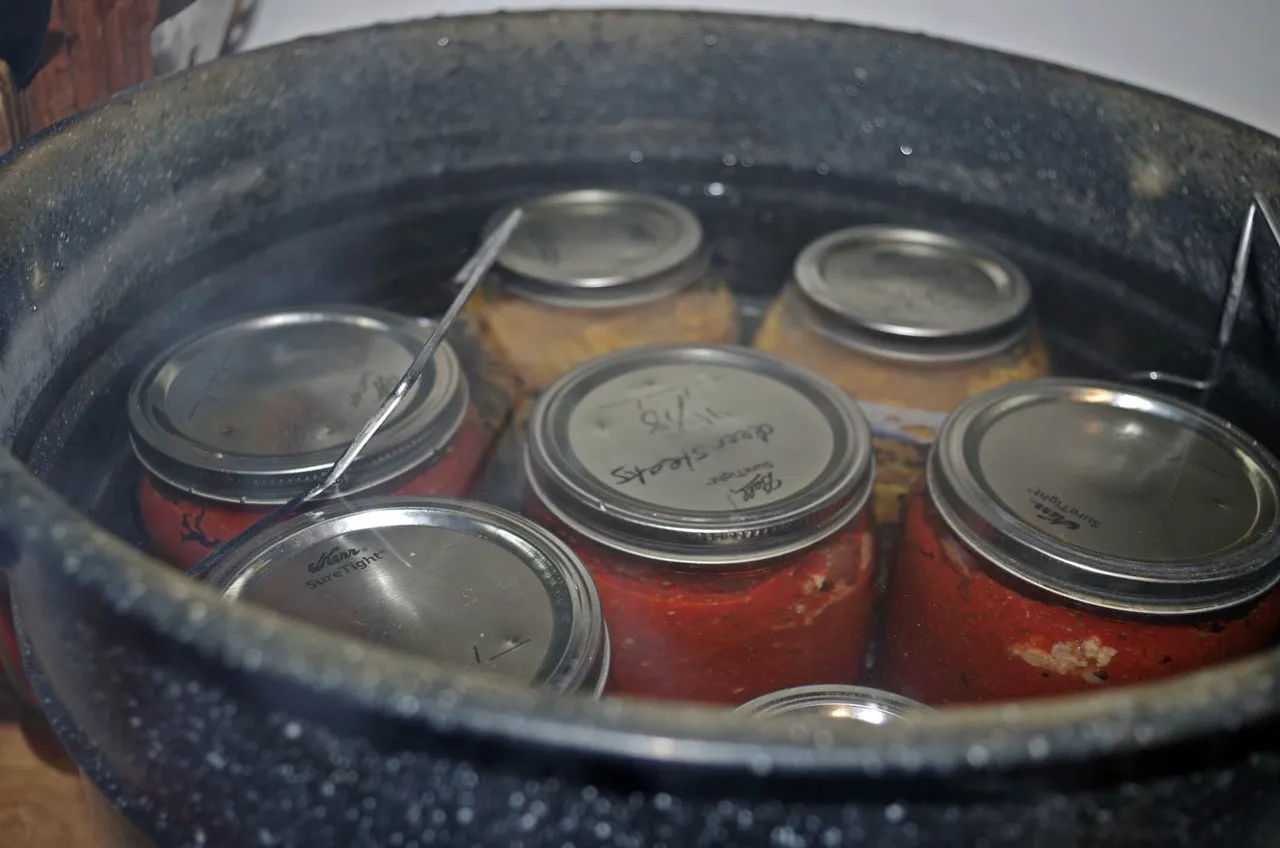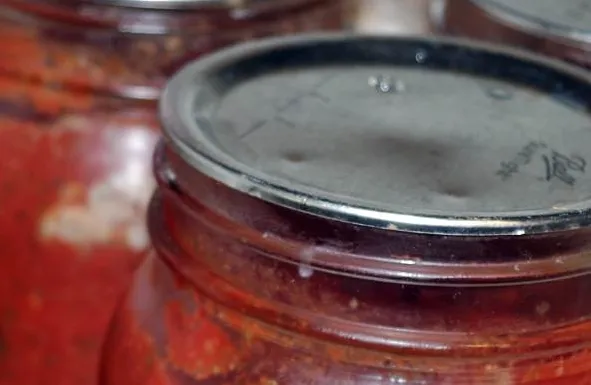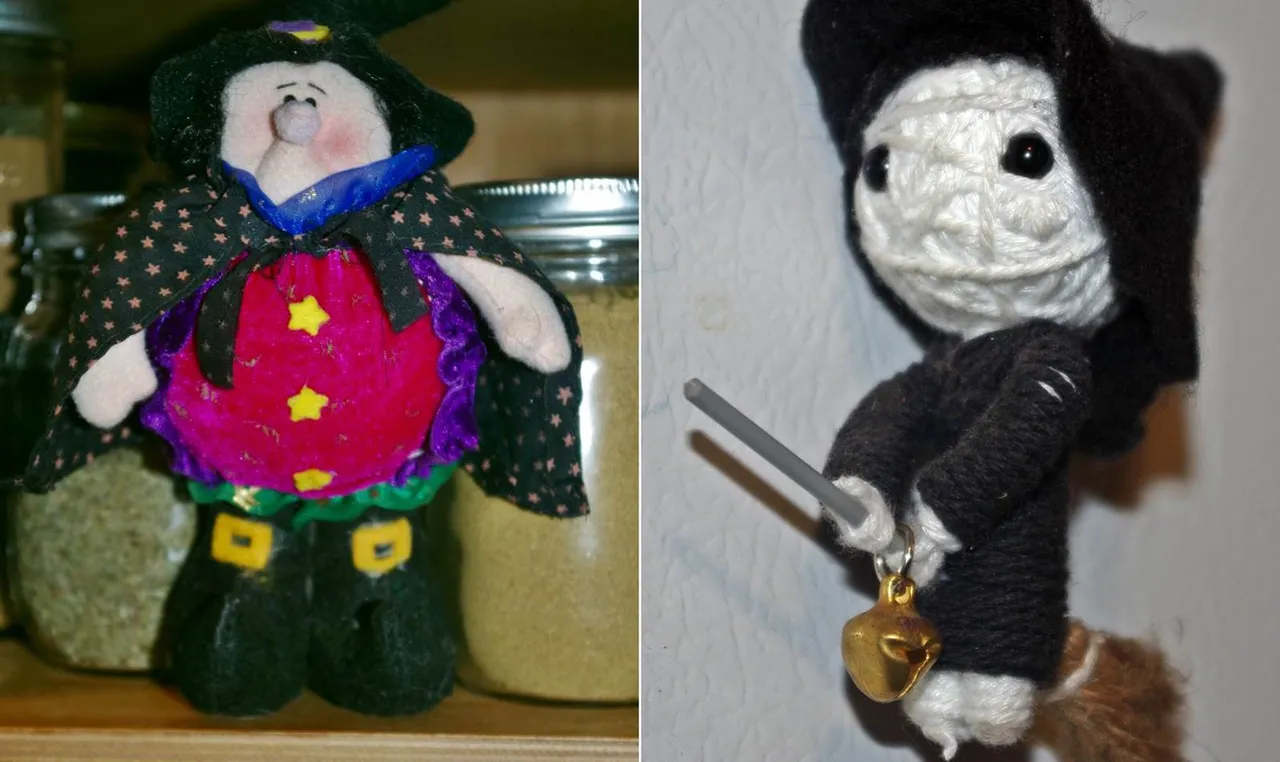I sort of meant to post this one ahead of my meatballs and spaghetti sauce canning article, but #foodfightfriday came along so I did that first.
But, I wanted to get into the topic of...
Rebel Canning

(Rule broken: using the water bath canner to can meats.)
In the USA, we have the United States Department of Agriculture (USDA) who are in charge of all sorts of things from the broken food pyramids that have made people fatter over the years to making sure that home canners don't kill anyone with botulism.
On the surface, this is a good things, but it's also made everyone terrified of doing anything differently no matter how long the older methods were being used.
Of course, the USDA only operates in the USA (I'm sure they'd love more power though) - so other parts of the world do things differently. I started learning other methods when I lived in the UK - where (at the time, anyway) I could not find a proper water bath canner and wasn't brave enough to even look for a pressure canner.
Now, you can't just throw out all the rules, so talking to others about what used to be done is a good first step to working out which rules can be bent or broken - and which ones really do make good sense.
At the end of the day, you have to make the decision for yourself - which methods you want to try, which ones you wish to avoid... and learn how to do it to the best of your ability.
What's all the fuss about?
Botulism.
Again, it's very difficult to find non-USDA-approved sources for anything, but I'm trying. Asking the question even in my rebel canning groups is asking to be lynched. It's an old mantra ingrained by the USDA.
Here are a few facts about botulism...
- It's not quiet in food. It smells, it's noisy, it's slimy, it's disgusting! In other words, unless you are ignoring all your senses, you're not going to accidentally eat it!
- Botulism spores live in the soil abundantly. They aren't in the food, they have to be added.
- The spores and their toxins can be killed relatively easily. Cooking at temperatures of around 185F or 240F is the main thing - but which one? Depends on who you talk to. Maybe it was to sell pressure canners... maybe it was to discourage people from trying more expensive products at home.
When in doubt go back to no. 1 plus the fact that botulism poisoning is actually pretty rare. Large-scale food scares from the food industry are far more common. (How many scares have we had in the past two years alone regarding romaine lettuce and eggs? How much food was needlessly destroyed due to bad handling?)
The fact is, if you clean your produce and keep your working area clean, you should never, ever have any problems with botulism!
Moving along...
Methods I have used, personally
Open kettle. Ladle your boiling hot ingredients directly into the waiting (hot) jars. Close and wait for the jars to "ping" sealed. Note: this method should only be used with high-acid products such as jam and pickles. I've used it with only a tiny fraction of failures.
Water bath. A water bath canner has a rack that fits inside to hold the jars securely. The canner is filled at least half way with water, brought to a boil. (If your jars are cold, put them in before turning on the heat - if your jars are hot, wait until the water is boiling.) Then, you time according to what you're canning and your elevation. Meats are always 180 minutes/3 hours with additional time required for high altitude. At 5000 feet, the time becomes nearly 5.5 hours. Fish is always 240 minutes/4 hours with elevation additions as required.
(I have seen some people do the water bath without the rack - they use a large pot and a towel inside to keep the jars away from the heat. I've had mixed results when trying this method.)
Other Rules I Break

(Rule broken: reusing the lids. If it seals, it seals! They usually do.)
USDA: "Always use new lids." and "Always use proper canning jars."
I always reuse my lids! If it seals, it seals! Again, when I was in England, I didn't see what I was used to. I didn't understand Kilner jars at the time - though I'd love to try them now. But I learned that pasta sauce jars had great lids that usually resealed, so I used them.
Even in the US, we didn't always have disposable lids - we used old Ball jars with a glass lid with a rubber gasket which had to be replaced every once in awhile. (And can still be bought at hardware stores.) Kilner jars are usually sealed with a rubber gasket and a spring lid to keep it tight. There is currently a revival using these older lids and gaskets.

(Rule broken: reusing pasta sauce jars. Again, if it seals, it seals. All four sealed in a DIY water bath.)
USDA: "Always pressure can meats and low-acid products."
Go back to the discussion on botulism. The 240F seems to require a pressure canner to reach, but boiling seems to be more than enough to kill everything - including dangerous water impurities following a disruption to the water supply.
In any case, the USDAs own rules from the past gave times for water bathing everything. Our grandmothers knew how to do this and now we're relearning.
Thus far, I haven't lost a single jar of meat that I've canned in my 5.5 hour water bath - even paté (which is also not supposed to be done...) I will share that experience with you sometime.
Not all new rules are bad...
As a rule, we used to store jars with their rings still screwed onto the jar.
It has been more recently discovered that sometimes a jar that comes unsealed can "reseal" itself if the ring is still screwed on. This can obviously result in potential food poisoning due to the fact that you don't know the food has gone bad until you've opened it. (Again, botulism - and other food borne pathogens - aren't very quiet.)
So, after canning, leave your jars 10-24 hours, but then take off the rings, clean the jars as necessary, and label/store them!
I hope you find some of this information useful. I will link to it in future canning articles for easy reference. Try not to be too afraid to try canning. It's a lot easier than what it sounds like at first. My first batch (marmalade) was a complete loss - my recipe was bad and I tried the DIY water bath without success. Too many changes from the original to get away with.
Since then, (about two years ago) I haven't lost more than the odd jar left in the fridge too long when it didn't seal. Even my paté was perfect on crackers nearly a year after canning it. I am still opening some forgotten jars of turkey broth from two Thanksgivings ago - it's still good - and useful in my Turmeric Rice.
I expect some more canning to come along here soon. My husband is without a job, so I'm hitting one of the food pantries for produce whenever I can manage it. Sometimes, especially late in the day, they're trying to get rid of some of the produce that won't keep until the next day. I can grab extra and can it!
Canning is truly a case of: Waste not, want not!

Two of my kitchen witches. One hung in my grandmother's kitchen as long as I can remember, so I have mine - adding a certain magickal spice to my cooking, presumably...
My grandmother's now lives in my mother's kitchen.
Previous recipes in Lori's Cookbook
(Links are for Steem... For Whaleshares and WeKu, simply place whaleshares.io or main.weku.io where the steempeak.com is.)
Breakfasts
Easy Suppers
Simple Cheeseburgers
Spanish Rice
Italian Meatballs
Side Dishes
Sauces
Desserts
Canning
[Rebel methods](
Meatballs and Spaghetti Sauce
Note: All photos are mine - Pentax K30.
Crossposted at Steem, Whaleshares, WeKu, Hyperspace
Lori Svensen
author/designer at A'mara Books
photographer/graphic artist for Viking Visual
verified author on Goodreads
find me on Twitter
blogging on: Steem, Whaleshares, WeKu, Hyperspace




Join us in the Official Whaleshares server in the text channel "the-phoenix-project"


